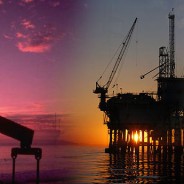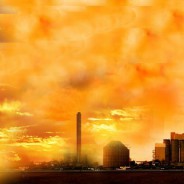CSAPR – Cross State Air Pollution Rule – Trading Strategies
CSAPR – Cross State Air Pollution Rule – Trading Strategies
There are some clear winners and losers in the recent Cross State Air Pollution Rule (CSAPR). With the modified ruling of allowing the first two years of open trading among the groups, bring up some significant opportunity to maximize trade potentials for significant gains. At AEP, I have spent numerous hours learning and evaluating emissions trading strategy given our largest emitter standings in almost every category. I will tell you now CSAPR offers significant opportunity to make or lose significant sums of money.
Emissions trading require game theory analysis with some added inefficiencies in order to safely execute a successful trading strategy. Working with the Center for Energy Economics and simulating the recent CSAPR and reviewing the ruling there are some real opportunities for those in short position to minimize their losses significantly. As with most new trading rules/laws, they never account for potential maximization of individual actors.
If you are in a short position, please do call or email me I can help mitigate whether you are in Group 1 or Group 2. Likewise, if you are long call or email me, please don’t go selling away as you will likely be leaving money on the table. Since the beginning of emissions trading, there have always been significant losers and winners. Emission market trading requires a fundamental approach to ultimately be successful.
David K. Bellman
614-356-0484
CSAPR – Cross State Air Pollution Rule – 5 Steps to Solve / Gain Insights into the Impact on the Market
1. Understand the rule in terms of the number allowance and the limitations of trading
2. Evaluate existing generation emission rates (EPA)
3. Examine the choices to mitigate emissions
-
-Retire
-
-Install Pollution Control Technology – Cost and Effectiveness
-
-Dispatch less – Competitive landscape with alternative plants
4. Simulate the various mitigation sources through pricing emission
- Emission price will lead to reduce emission
- High enough price will lead to retirement or incentivize the installation of control technology
5. Analyze competing fuel competition demand as a result of simulation
- Do the commodity assumptions make sense in lieu of the competitive landscape and underlying fundamentals? If not repeat step 4 with new commodity assumptions.
Call us to help you reaffirm your conclusions or help you through the process. We can identify hurdles and give you solutions to get you over them and also help you avoid the land mines of analytical paralysis.
David K. Bellman
614-356-0484
Natural Gas Price Keeps Falling and Falling – Is there an End?
Gas prices being this low is not amazing. What I do think is amazing is the forward strip. Clearly in the “shoulder” month – high supply and low demand – prices can capitulate. However when demand does pick up as we head into winter it would be very unlikely to have prices stay below $3.50. I documented this phenoman in my presentation that I did at the Platts Coal Properties & Investment Conference. In a nutshell you are seeing for every 10cent drop in price almost 1 bcf/d of more gas consumption in the power sector.
Breaking it down – just from weather in November to December over the past 10 years demand has risen on average 18 bcf/d. Over the last two years over 24 bcf/d. Now given the price impact on the power sector you can expect at least an additional 6 bcf/d above and beyond the weather impact. A total of 30 bcf/d of incremental increase demand in one month has never been seen. Last year we saw a rise of 25 bcf/d and the price responded accordingly.
Last year prices of the henry hub bottomed out at $3.20 then within a month time prices climbed over $4 – peaking at $4.55 in January. Unless weather is abnormally warm I dont expect anything different this year. Coal prices that utilities are paying for (FOB + Delivery) are higher across the board. In the end its the spread that matters not the absolute price of natural gas. The forward curve is seriously discounting the demand surge expected when the winter weather comes.
David K. Bellman
Cross State Air Pollution Rule (CSAPR) – AKA Casper – Coal Unit Changes
I have reviewed the EPA emissions data for 2011 and compared it with 2010. There are many coal units who no longer are showing up in the list and/or are no longer emitting nearly as much. This is a clear sign units are retiring, retrofitting, and/or installing control equipment. I was able to identify a few units that have actually converted to gas.
Most of the time when I examined retrofitting a coal unit to burn gas, the economics have to be driven for grid stability and/or capacity purposes. Converting the unit to burn gas typically leads to worse heat rate and coal units compared to combine cycles are already 30% less efficient. Adding less efficiency will lead to having a very expensive peaker on the system.
If there is interest to mapping your system data to the latest EPA releases I do have a proven system to do this. Please send me an email if your intersted in this. I could save you much time and headache.
David
614-356-0484
Modeling Cross-State Air Polution Rule (CSAPR) by the EPA
Modeling Cross State Air Pollution Rule (CSAPR) can be done. If you haven’t already done so – it is right around the corner 1/1/2012. I can help you setup your power model to run the Cross State Air Transport Pollution Rule (CSAPR). I will also be able to explain a process to produce emission price forecast. This can be done in just about any power model – whether it is AURORAxmp, Promod, GE Maps, etc…
I can have all this done before next year if you would call me ASAP 614-356-0484. I have been working with the Center for Energy Economics Bureau of Economic Geology Jackson School of Geosciences The University of Texas at Austin. Within a weeks time we will be running simulations of CSAPR in various gas price conditions producing projections of emission allowance prices.
This proven process that I will transfer to you will also be able to identify coal retirements in the system, show potential stress points in terms of gas demand as coal units retire, and many other significant market insights. Modeling rules like this will have potential to make or mitigate cost within the millions. I have a process that will be transparent and empowering to your team. Your knowledge of the markets will expand immensely.
You will note I have received notable recommendations for my ability to get your team up to speed on the Cross State Air Pollution Rule (CSAPR).
“David is a highly intelligent, talented individual. He is an expert on markets and economics and provided AEP and me with excellent analysis and information which was applied directly to our strategic planning.”
— Carl English, Vice Chairman, American Electric Power
“David is one of those rare people who can see the forest but also knows how the trees are made. He has a strong background in energy and energy modeling with real depth in oil, natural gas, and power/emissions markets.”
— Allan Stewart, Executive Director, PIRA Energy Group
Please do call – times of uncertainty you can lose or make significant sums of money.
David
Stranded Wet / Liquids Rich Gas from Shale Gas
Gas production from the shale gas revolution has not only added gas production, but petroleum liquids. This is seen in fields from Eagleford, Marcellus, to Utica. This added benefit has skewed the economics of natural gas production. Certainly these liquid rich plays have impacted the recent natural gas price capitulation. Producers are almost ignoring the natural gas price and just focusing on the liquid value-add as the petroleum markets maintain their strength.
However all is not well for the producers. The existing infrastructure in the Midwest is not design for all these liquids. The bulk of US refinery continues to be in the Gulf Coast. There are several projects underway and/or proposed to alleviate the pressure from stranded liquids in the region.
There is an ethane pipeline being built from Markwest Hydrocarbons Houston, Pa processing plant (just southwest of Pittsburgh) to Sarnia, Ontario to feed ethylene crackers owned by Imperial and Nova. Enterprise Products and Chesapeake recently announced an ethane pipeline that will take Marcellus and Utica ethane production to the Mont Belvieu, TX area and U.S. Gulf Coast ethylene crackers. El Paso is also evaluating converting the Texas Eastern natural gas transmission pipeline to an “ethane gas” pipeline that would move Marcellus and Utica ethane to North Louisiana in a gaseous form (can’t move as liquid because maximum pressure of the TE p/l is 750 psig), where they would build a cryo plant to convert the ethane back to a liquid, and a new pipeline that would transport the liquid ethane from the cryo plant to Dow and Westlake’s ethylene crackers in South Louisiana.
The final ethane takeaway solution is called “Mariner East” and is a joint project of Markwest Hydrocarbons and Sunoco that would take ethane by pipeline to Philadelphia, then load it on some old converted LNG vessels and ship it to the U.S. Gulf Coast for ethylene cracker consumption.
If you are participating in this area the first thing you need to do is evaluate the regional refineries. I could help you make a list of all the refineries, gather info on the current type of crudes they’re equipped to handle, call common carriers to get freight rates, calculate the value of the crude/condensate, etc. If your production is going to be significant, I can evaluate the various projects listed above for project viability and impact. I can also evaluate the worth of pursuing “if and where” a storage and barge terminal constructed on a river to transport to refiners that can be accessed by water.







